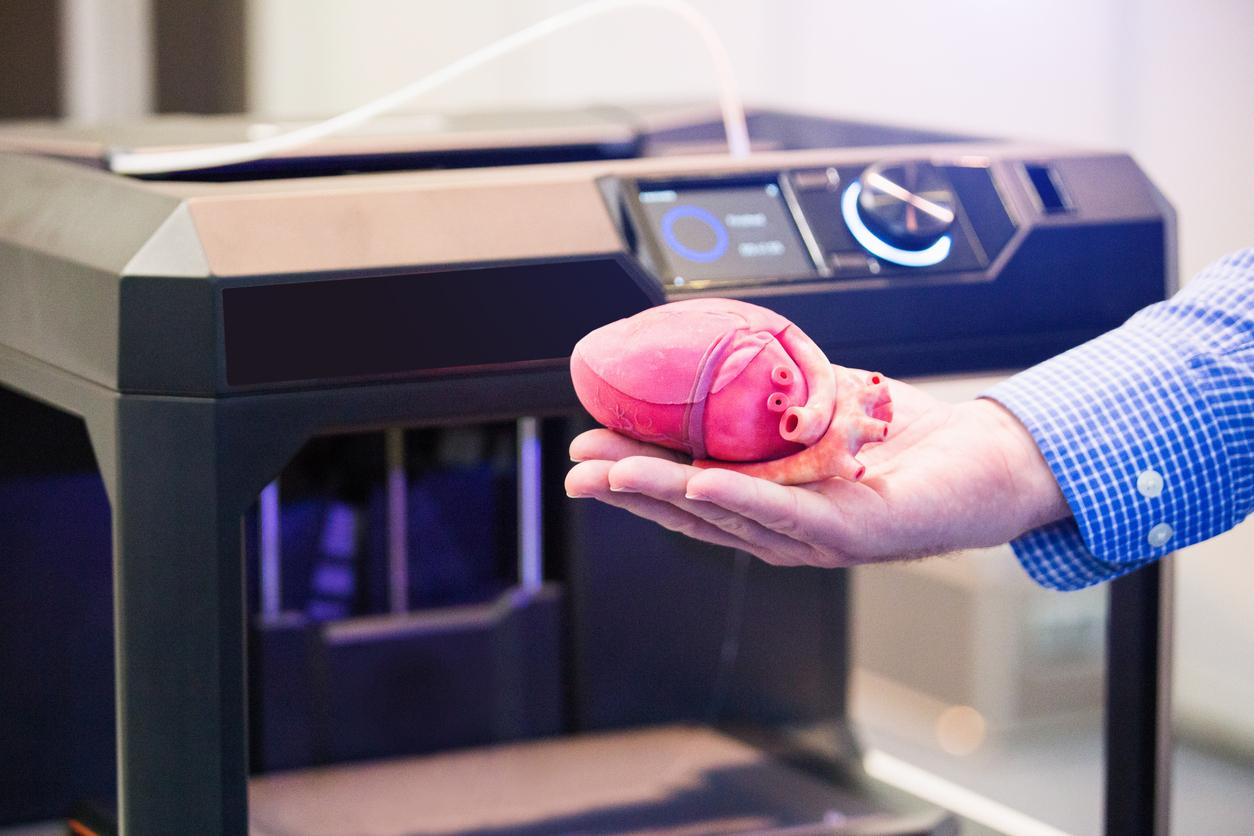A patient with head and neck cancer has just had a successful 3D-printed titanium jawbone transplant. A world first that opens up the field of possibilities.

- According to the WHO, head and neck cancer is the 5th most common cancer in France, behind that of the prostate (1st), breast (2nd), lung (3rd) and colon (4th).
- Each year, approximately 15,000 new cases of ENT cancers are diagnosed in France. These cancers concern two to three times more men than women, and particularly smokers.
This is a first in the medical world. A patient with head and neck cancer has just benefited from a 3D-printed titanium lower jaw graft, reports the scientific site EurekAlert.
Made, after four years of research, by the Netherlands Cancer Institutein collaboration with Mobius 3D Technology, the jaw was created with the help of a 3D printer, based on patient images and scans.
A new hope
This technological feat represents new hope for patients suffering from head and neck cancer, also called ENT cancer or cancer of the upper aerodigestive tract (VADS). This is because tumors in and around the jaw have so far been treated by removing part of the lower jaw bone – the mandible. This is then reconstructed with bone from another area of the body, such as the fibula, or replaced by grafted metal plates.
But these solutions pose a problem: bone grafting is a complex process that requires reconnecting native and implanted blood vessels, which can generate morbidity, while the metal plates can, in 40% of cases, break , wear out over time or penetrate the mucous membrane and skin.
More aesthetic and tailor-made
Lighter, unbreakable and custom-made, therefore closer to the original mandible, the 3D titanium implant considerably reduces the risk of complications for the wearer. The surgery is also simpler and less time-consuming. Not to mention that the aesthetic rendering is incomparable.
“Because the implant is custom made, the jaw retains its fit and the pressure on the underlying mucosa or skin is distributed more evenly. Even the tools the surgeon uses during the operation are patient-specific. “says the Netherlands Cancer Institute in a statement.
According to the researchers, this innovation could be available on a larger scale in the next two years. And it could be used for other facial and skull transplants.














-1695453006.jpg)


